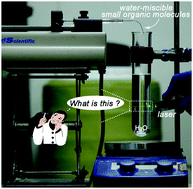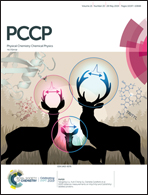Covalent capture of supramolecular species in an aqueous solution of water-miscible small organic molecules†
Abstract
Since an early report in the 1970s, the mesoscale inhomogeneities formed in an aqueous solution of water-miscible small organic molecules have been debated for over forty years with a variety of explanations. Although it was recently established that these inhomogeneities are supramolecular species caused by trace impurities, the structure of the supramolecular species and the mechanism behind their formation are not yet clear. By means of covalent capture, we herein disclose that the formation mechanism of the supramolecular species consists of a two-step self-assembly process: the small molecules first assemble into primary micelles with a trace amount of impurity, and the formed dynamic ultra-small micelles aggregate further through hydrogen bonding to achieve a buildup of thermodynamic mesoscale inhomogeneities. Based on this finding, supramolecular species have been used as elements for pH-responsive size-changeable drug carriers, which respond to the acidic tumour extracellular milieu and decompose into small particles for deep tumour penetration and effective distribution.



 Please wait while we load your content...
Please wait while we load your content...